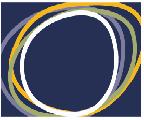First AC+erm colloquium
The first colloquium for the AC+erm Project—focusing on the ‘People’ facet of the project—was held on 9 October last, in the impressive setting of the Wellcome Collection conference centre in London.Just under 50 delegates attended, adding to and extending the data from the e-Delphi data in a series of discussion forums
http://www.northumbria.ac.uk/sd/academic/ceis/re/isrc/themes/rmarea/erm/coll/coll1/
The Project colloquia perform two functions: firstly, they are used to collect further data in the form of contributions from delegates; secondly, they are one of the vehicles by which interim research results are disseminated and publicised. As with the Delphi Study panels, delegates are drawn from various stakeholder groups so that perspectives other than those of records professionals inform the research.
The first function works to validate and extend the Delphi Studies through face-to-face discussions between a larger audience of participants. The colloquia complement the e-Delphi Studies to provide a sound balance in terms of data collection enabling expert opinion, experience and views on each issue to be gathered and practical solutions to be shared and refined. They also further one of the project aims of building partnerships within and beyond the records professions.
The October colloquium started off with an introduction from the project team on the research project itself; further dissemination served to punctuate and serve as a framework for the ‘hard labour’ exacted from the delegates in the course of three discussion forums. These forums addressed the ‘People’ issues and solutions that had emerged from the Systematic Literature Review and the e-Delphi Study.
Delegates were asked (i) to refine and add to these existing outputs, and (ii) to make suggestions / proposals for developing vignettes and their appropriate audiences. The vignettes are a form of output that crystalises aspects of the research findings in the form of tools or exemplars that can be of use to practitioners, users and other stakeholders. Possibilities so far mooted range from the simplicity of a postcard-sized aide memoire to the sophistication of a video game.
For the discussion forums, delegates were split into a number of groups, each of which contained representatives from more than one stakeholder group and sat at a separate table to facilitate discussion and exchange. The team had planned for a worst-case scenario where everyone just sat and Iistened; we need not have worried, as the delegates pitched in with a will and engaged animatedly with the issues.
Forum 1—Delegates were asked to consider and comment on the full list of issues from the SLR and e-Delphi, and to add any issues they felt were missing.
Forum 2—Delegates were asked to choose the issue that most interested them, and to form discussion groups with others who had chosen the same issue. They commented on the solutions that had been proposed through the e-Delphi study, and made proposals for vignettes and audiences for these vignettes.
Forum 3—This exercise was similar to that carried out in Forum 2, but this time the issue for discussion was allocated to the delegate groups rather than chosen by them. Once more, they commented and suggested vignettes—one particularly inventive group whipped up a game of ‘Records Management Snakes and Ladders’ on the spot.
In each forum, the delegates were asked to make notes and/or appoint a rapporteur to report back from the discussion; the initial issues/solutions list plus the collated notes of the rapporteurs and individual delegates form the outputs from the colloquium. These outputs can be viewed in the ‘Dissemination’ area of our website at
http://www.northumbria.ac.uk/sd/academic/ceis/re/isrc/themes/rmarea/erm/diss/coll_diss/coll1_diss/
Feel free to comment on the colloquium or on any aspect of the AC+erm project—the more feedback we get, the more we are able to ensure that the project reflects the living as well as the ideal aspects of e-records and e-recordkeeping. And, of course, there is the challenge of the snakes and ladders to stimulate the artist or designer in you …



No comments:
Post a Comment